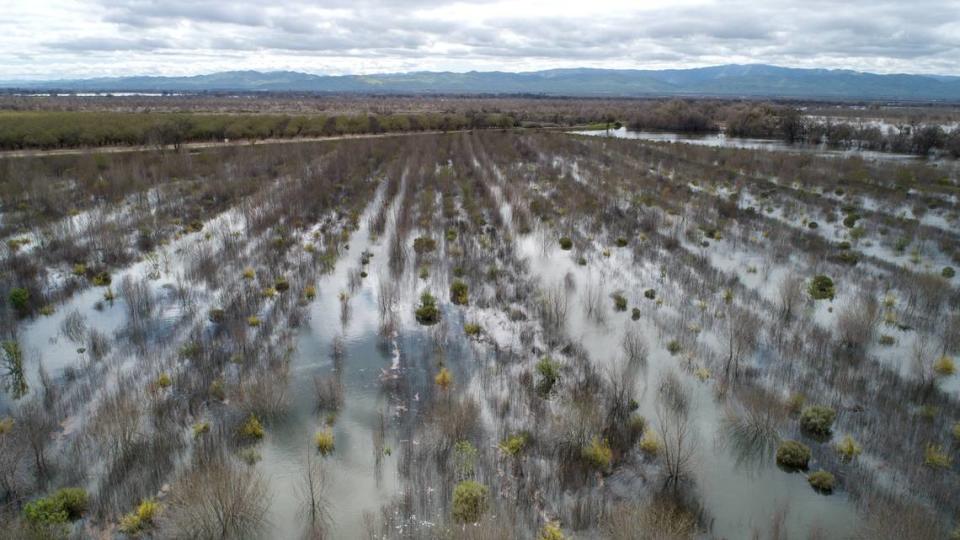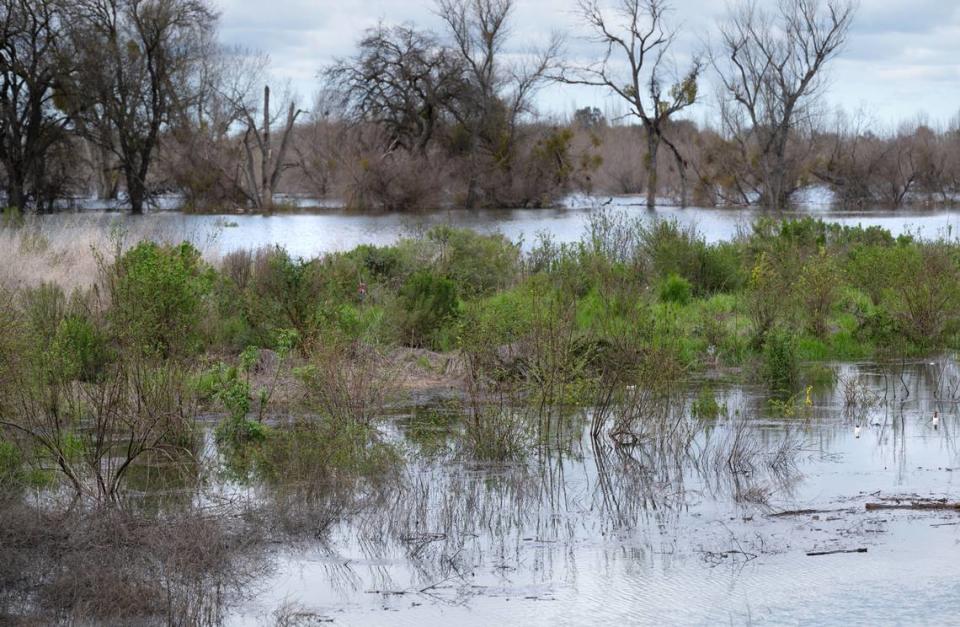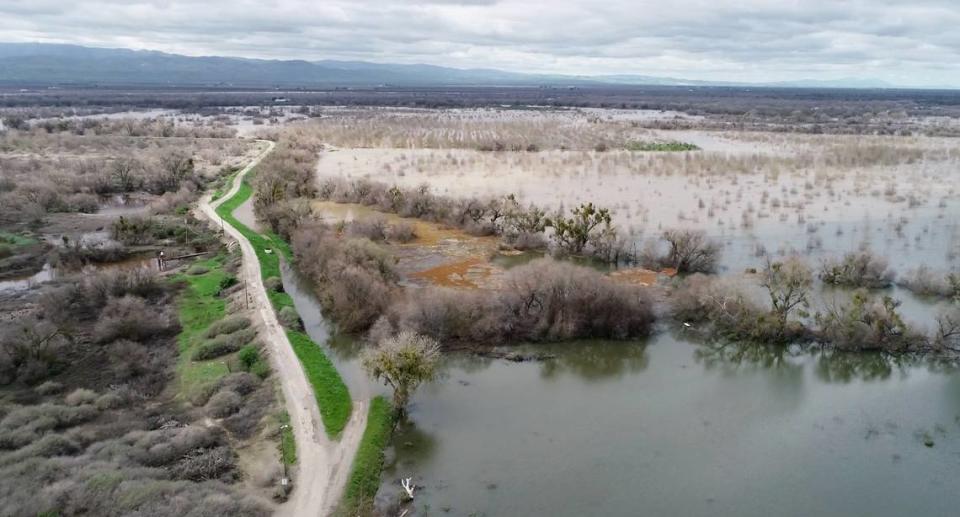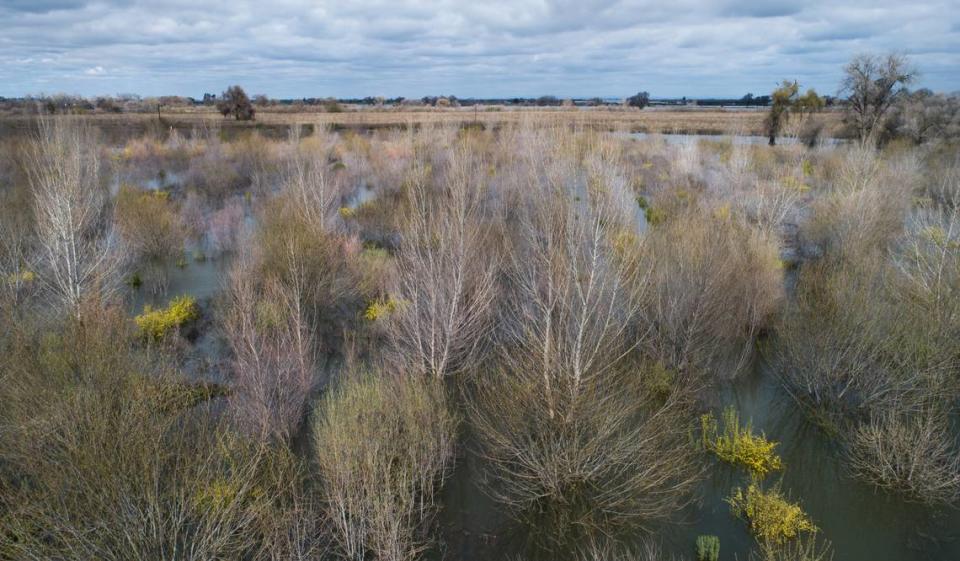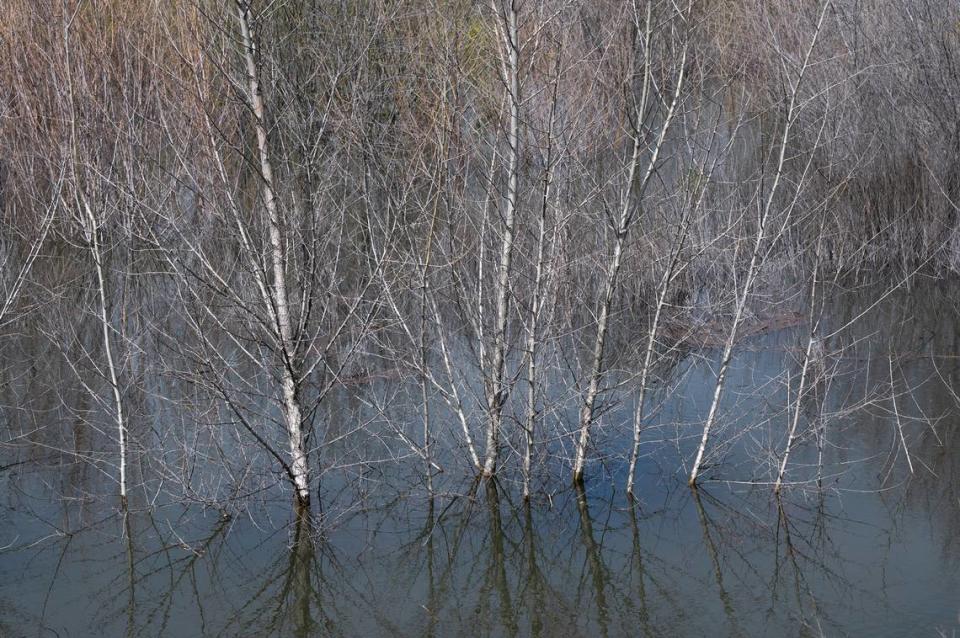Newsom order eases groundwater recharge amid deluges. Stanislaus already does plenty
- Oops!Something went wrong.Please try again later.
Farm groups said they stand ready to inject more storm runoff into aquifers under an executive order from Gov. Gavin Newsom.
The March 10 decree suspends the permit process for new groundwater recharge projects through June 1. The state seeks to capture more of the runoff from the massive storms this year.
Some of the irrigation districts in Stanislaus County have done on-farm recharge for decades. And it is happening increasingly on restored natural floodplains such as Dos Rios Ranch, southwest of Modesto.
The Modesto Irrigation District can easily meet its own customers’ needs from the Tuolumne River this year. That prompted a unanimous board vote Tuesday to sell water to farmers just outside the boundaries. The hope is that these users will forego well-pumping, further boosting the aquifer.
“God’s doing it right now, but we’re going to give him a little help,” board President Larry Byrd said.
MID’s own farmers can get a regular allotment over the irrigation season starting March 31, plus an extra delivery at the mid-autumn end for recharge.
The Turlock Irrigation District already is two weeks into its season, encouraging farmers to take Tuolumne water for recharge now. The crops do not need it yet, so it can seep down into the aquifer.
The practice works best in well-draining soil types. It also helps to have a large reservoir such as Don Pedro, where MID and TID can store some of the spring runoff for recharge use later this year. The Oakdale and South San Joaquin irrigation districts have a similar advantage with New Melones Reservoir on the Stanislaus River.
Support from congressman
Rep. John Duarte, R-Modesto, uses MID water for his wine grapes. He dropped by the board meeting to endorse selling the surplus around the Central Valley, as long as local demand is met first.
“It’s good for our residents,” Duarte said. “It’s good for our system. It’s good for our ability to pay our bills and make the capital infrastructure improvements we need.”
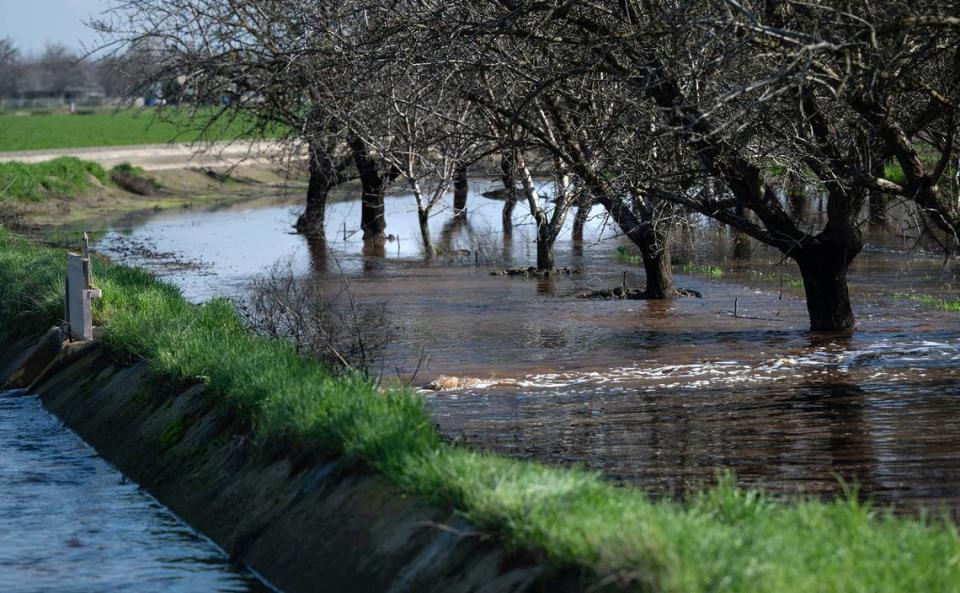
The Turlock district also is involved in a study on whether on-farm recharge harms almond orchards. It is a partnership with the California Department of Water Resources and the nonprofit Sustainable Conservation.
Last month, a few of Newsom’s agency heads saw the pilot project along a canal bank near Keyes. They talked there about the need to ease permits for storm water recharge.
Recharge catches water that otherwise might flow out to the Pacific Ocean. Advocates see it as cheaper and less controversial than building or enlarging reservoirs.
California set up its recharge permit process to ensure that no one took water belonging to someone else. This year’s runoff is so immense that it can be captured with little conflict, and stored in aquifers available to many well owners.
Newsom’s order does not allow recharge on farmland that had pesticides or fertilizers applied in the previous 30 days. It also cannot harm wildlife.
‘A strategic water bank’
Much of the farmland grows feed for milk cows, the state’s top-grossing farm sector. The order could bring recharge to about 1.5 million acres of such land, said a news release from Western United Dairies, based in Modesto.
“California dairies are a strategic water bank and storage savings opportunity for the entire state,” said President David Koolhaas, a milk producer near Escalon. “This is a practical approach to solving long-term water supply uncertainty and will go a long way in providing our underserved communities the groundwater they need to thrive far into the future.”
The permit process will resume June 2. It goes through the State Water Resources Control Board and the California Department of Fish and Wildlife.
Many parts of the Valley have aquifers reduced by drought and overpumping by farms and cities. Stanislaus County is not among the critical zones, but it still has to comply with a state law seeking sustainable pumping by about 2040.
Dos Rios takes on water again
Dos Rios Ranch sprawls across about 2,100 acres where the San Joaquin River meets the Tuolumne. Riparian forest has returned thanks to work since 2012 by the nonprofit River Partners and many supporters.
The restored floodplain first took on water in 2017, followed by a lesser volume in 2019. The latest inundation started this week and could be the largest to date.
Old farm levees were breached in a few spots to ease the flow. Dos Rios also nurtures fish, birds and other wildlife while reducing the flood threat to Manteca and other downstream cities.
River Partners President Julie Rentner commented on Newsom’s order to The Sacramento Bee. She said the state also needs to give rivers more room by modifying weirs, levees and other infrastructure.
“It’s not water rights restrictions that are really keeping us from being able to park water in the ground,” Rentner said. “It’s that we haven’t expanded our waterways wide enough. There’s simply massive conveyance constraints that make this really, really difficult to do.”
Dos Rios is closed to the public, but the first phase of a new state park could be open by the end of 2023.
The Sacramento Bee also noted that some experts said recharge alone will not be enough.
“There’s a lot of discussion about how important it is to recharge groundwater or floodwaters,” said Jay Lund, co-director of the UC Davis Center for Watershed Sciences. “This is sort of true. It will be helpful, but I think it’s kind of oversold. I don’t think we’re going to solve all of California’s water problems by this mechanism.”
